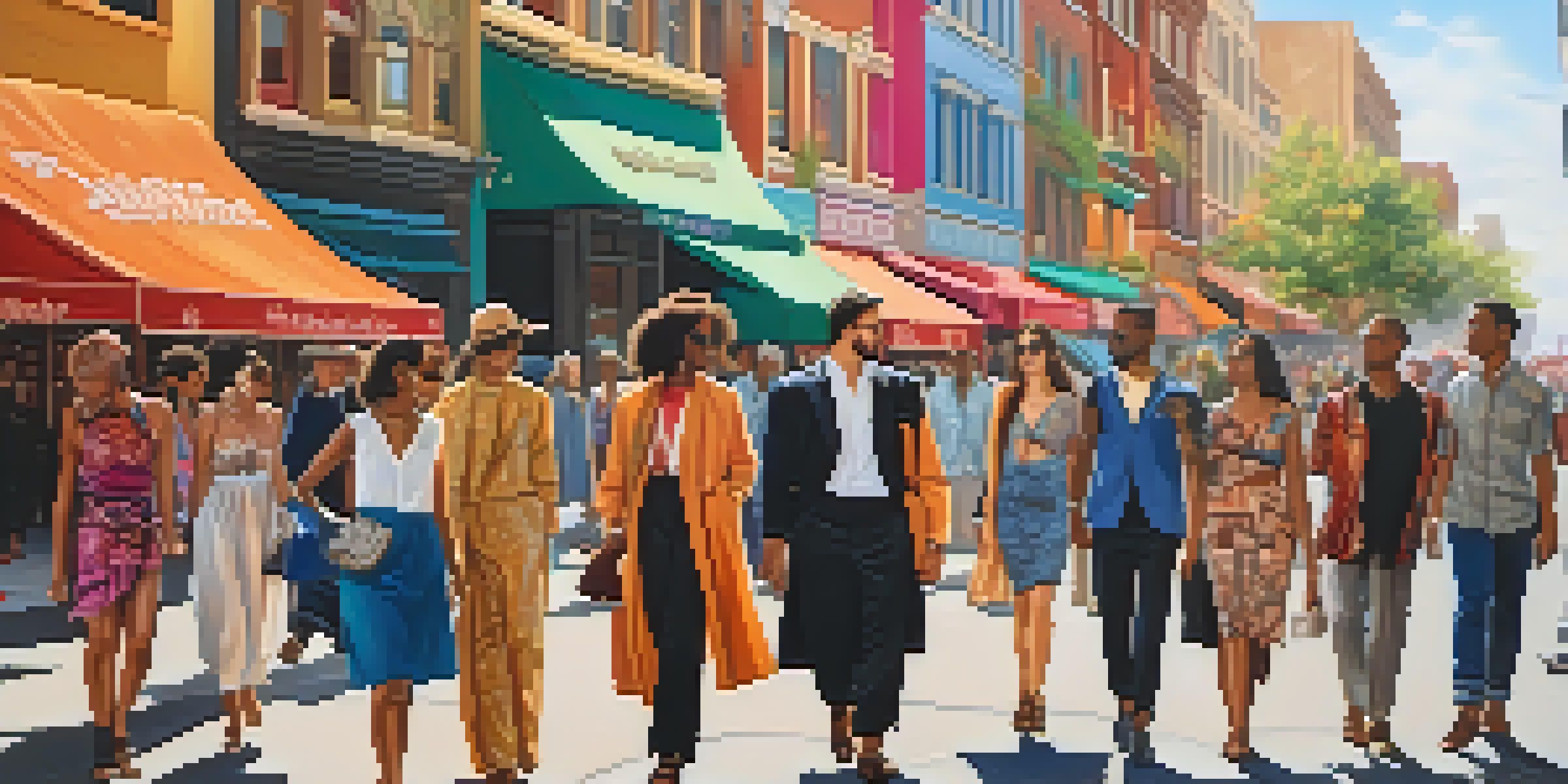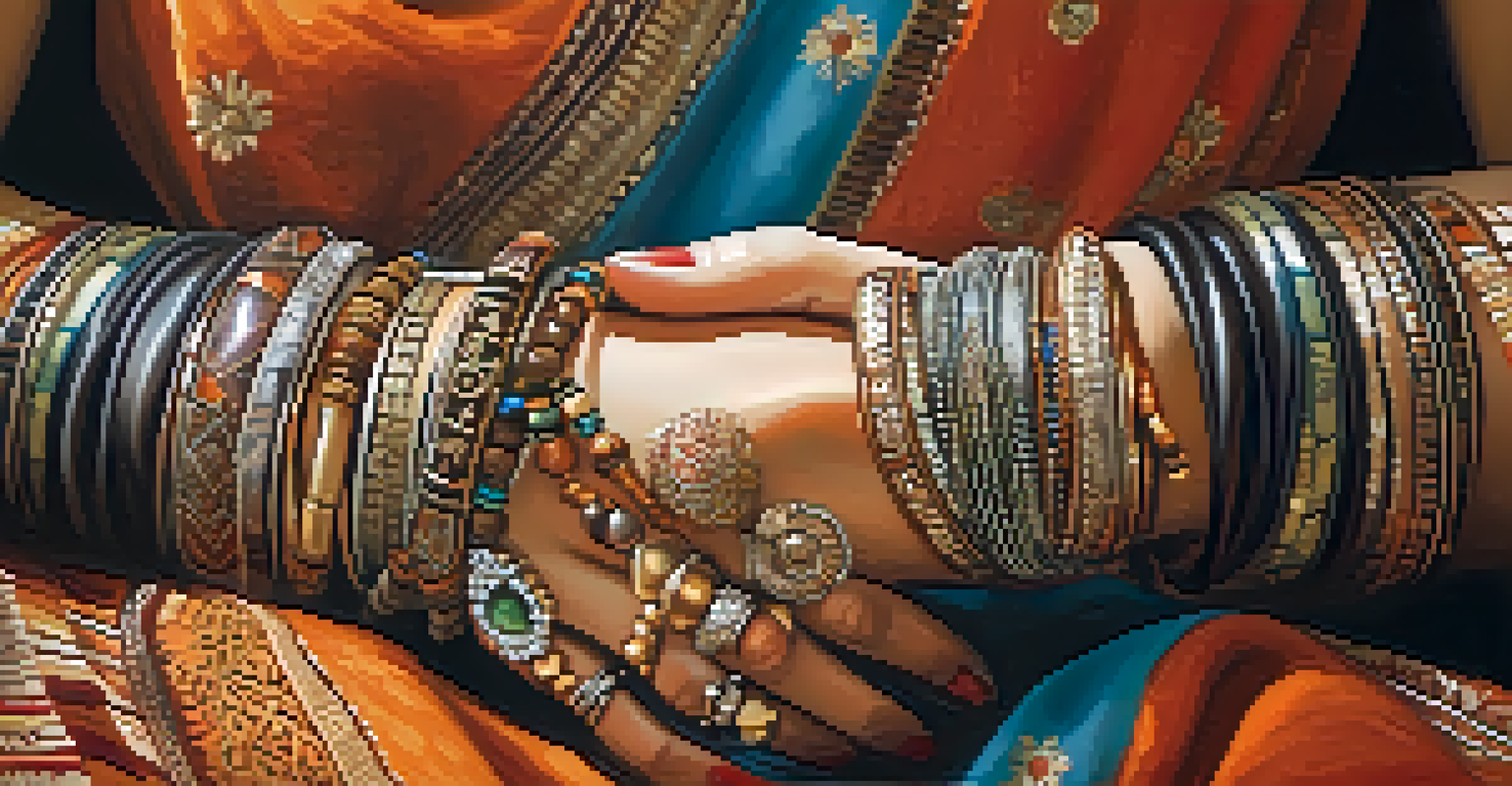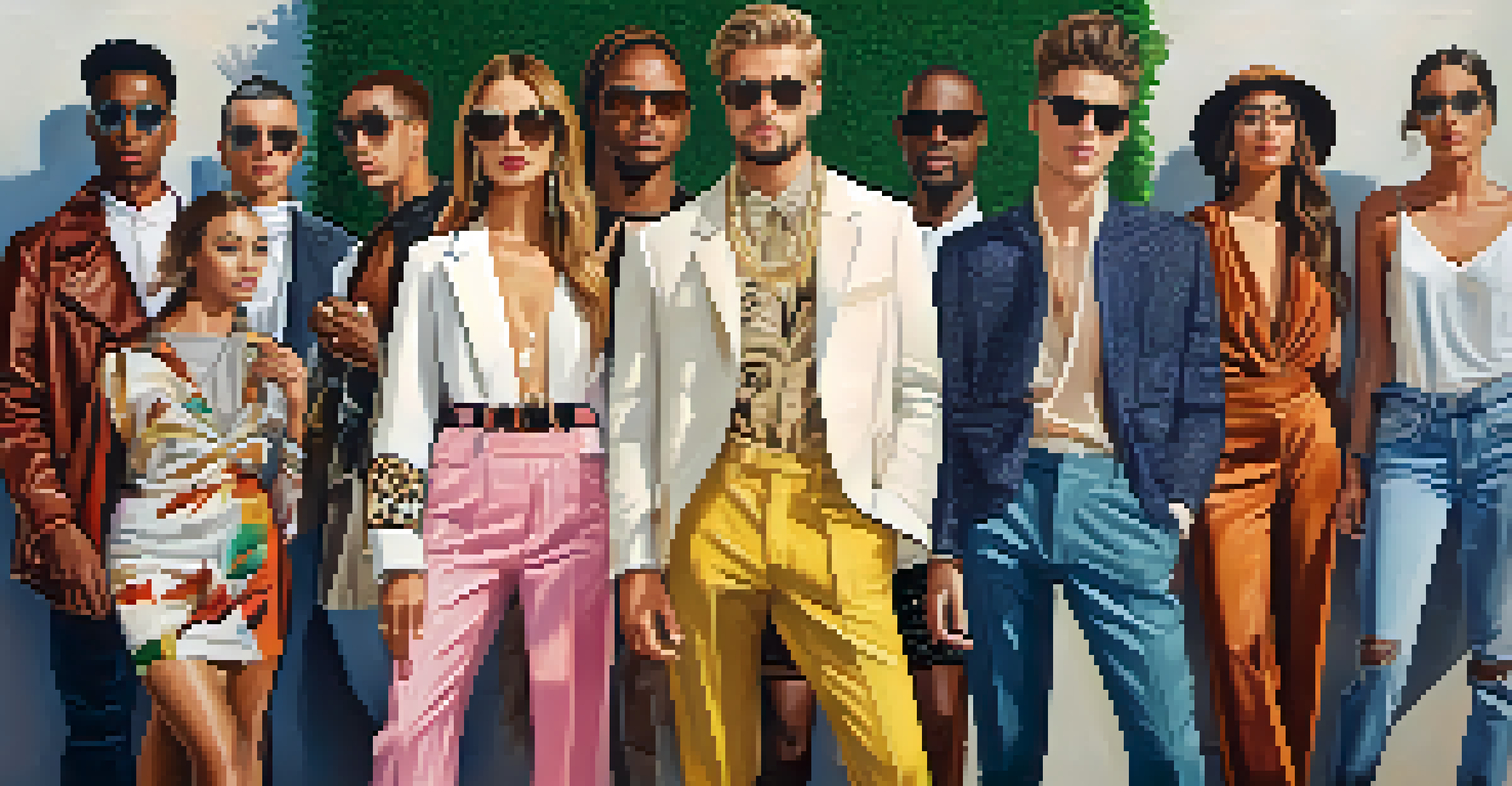Fashion and Identity: How Global Cultures Shape Personal Style

The Connection Between Fashion and Identity
Fashion is more than just clothing; it's a powerful form of self-expression that reflects who we are. Our personal style often serves as a visual identity, showcasing our values, beliefs, and cultural backgrounds. As we navigate through life, our wardrobe choices can communicate messages about our personality and social status.
Fashion is the armor to survive the reality of everyday life.
For example, someone wearing vibrant traditional attire may be making a statement about their cultural heritage, while another person in minimalist fashion might be expressing a preference for simplicity. This connection between fashion and identity is not just personal; it's also shared across communities and cultures, influencing trends and styles.
Ultimately, our fashion choices are deeply intertwined with our identities, shaped by the cultures we engage with, the places we live, and the people we surround ourselves with.
Cultural Influences on Fashion Trends
Fashion trends often emerge from cultural movements, reflecting the values and aesthetics of specific communities. For instance, the punk movement in the 1970s, characterized by its rebellious spirit, introduced styles such as leather jackets and bold hairstyles that challenged societal norms. This cultural backdrop significantly influenced mainstream fashion, leading to the adoption of punk-inspired elements in everyday wear.

Similarly, the global rise of streetwear has roots in urban cultures, drawing inspiration from skateboarding, hip-hop, and graffiti art. Today, streetwear has transcended its origins, becoming a staple in high fashion, with luxury brands incorporating its aesthetics into their collections. This evolution showcases how cultural influences can shape and redefine fashion trends over time.
Fashion Reflects Personal Identity
Our clothing choices serve as a visual representation of our values, beliefs, and cultural backgrounds.
As we see, fashion is not created in a vacuum; it is a reflection of the cultural zeitgeist, absorbing and transforming influences from various sources, which ultimately informs our personal style.
Globalization and Its Impact on Fashion
Globalization has played a significant role in shaping the fashion landscape, allowing for the blending of diverse cultural influences. With the rise of the internet and social media, fashion from different corners of the world is more accessible than ever. This interconnectedness means that styles from Tokyo, Paris, and Accra can inspire individuals across the globe, creating a rich tapestry of fashion choices.
Style is a way to say who you are without having to speak.
For instance, the popularity of African prints in Western fashion showcases how global exposure can lead to the appreciation and incorporation of different cultural aesthetics. These prints, once confined to their regions of origin, are now celebrated on international runways, illustrating the power of globalization in fashion.
However, this blending of cultures also raises questions about cultural appropriation versus appreciation. It's crucial to navigate these waters thoughtfully, ensuring that we honor the origins of the styles we adopt while celebrating their beauty.
Personal Style: A Reflection of Cultural Heritage
Our personal style often serves as a canvas for our cultural heritage, allowing us to honor and celebrate our roots. Many individuals choose to incorporate traditional garments or accessories into their everyday outfits, creating a unique blend of modern and traditional elements. This fusion can be a powerful statement of identity, bridging the past and present.
For example, wearing a sari with contemporary fashion pieces can showcase one's Indian heritage while also embracing modern trends. This practice not only highlights the beauty of diverse cultures but also encourages conversations about identity and history.
Cultural Influences Shape Trends
Fashion trends often emerge from cultural movements, showcasing the aesthetics and values of specific communities.
In this way, personal style becomes a dialogue between our cultural backgrounds and the contemporary world, reflecting the richness of our identities.
Fashion as a Tool for Social Change
Fashion has the potential to drive social change, serving as a platform for activism and awareness. Throughout history, designers and fashion influencers have used their voices to champion causes, from body positivity to environmental sustainability. This intersection of fashion and activism highlights the power of personal style in advocating for change.
A notable example is the rise of sustainable fashion, where brands and consumers alike are becoming more conscious of their environmental impact. By prioritizing eco-friendly materials and ethical production practices, the fashion industry is evolving to meet the demands of socially aware consumers.
In this context, personal style becomes not just a reflection of individual identity but also a statement of values, showcasing how fashion can be a catalyst for positive change in society.
The Role of Social Media in Fashion Identity
Social media has revolutionized the way we express our fashion identities. Platforms like Instagram and TikTok encourage users to share their personal style with a global audience, leading to the rise of influencers and fashion communities. This democratization of fashion allows for a diverse range of voices and styles, breaking away from traditional fashion norms.
Through social media, individuals can discover and curate their unique styles by drawing inspiration from others, regardless of geographical boundaries. The ability to connect with like-minded individuals fosters a sense of belonging, creating a supportive environment for fashion exploration.
Diversity Enriches Fashion Landscape
Embracing diversity in fashion allows for greater representation and expression of unique identities across the globe.
As a result, our personal style is continuously evolving, influenced by the trends we see online and the interactions we have within these virtual communities.
Embracing Diversity in Fashion
Diversity in fashion is essential in celebrating the myriad of identities that exist globally. As the fashion industry becomes more inclusive, we see a greater representation of different cultures, body types, and gender expressions. This shift encourages individuals to embrace their unique identities and express themselves authentically through fashion.
For instance, the increasing visibility of plus-size models and designers from diverse cultural backgrounds signifies a move towards a more inclusive industry. This not only empowers individuals to embrace their bodies but also fosters a broader appreciation for different styles and aesthetics.

Ultimately, embracing diversity in fashion enriches our personal style, allowing us to draw inspiration from a wide range of cultures and experiences, leading to a more vibrant and inclusive fashion landscape.